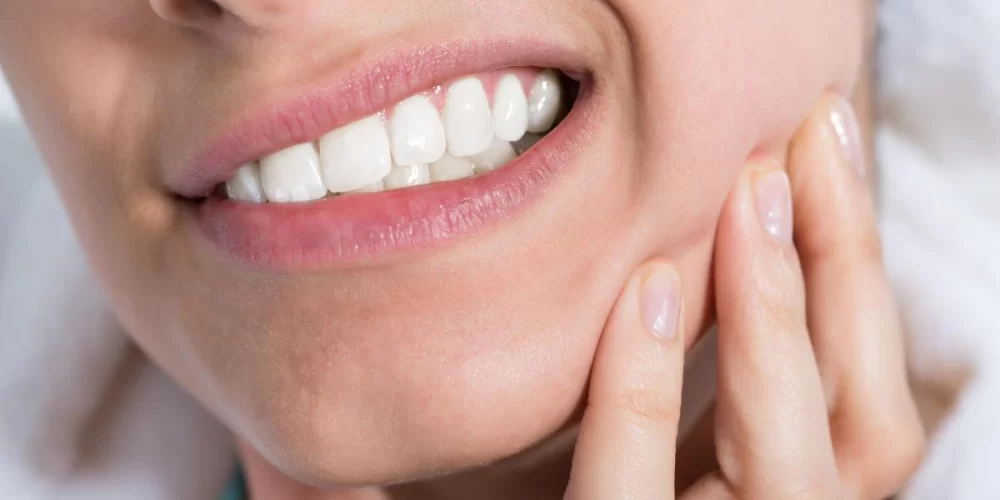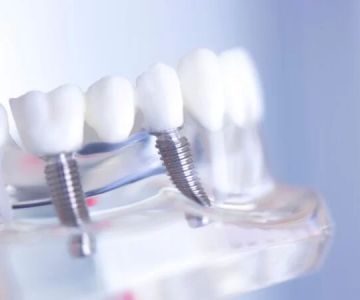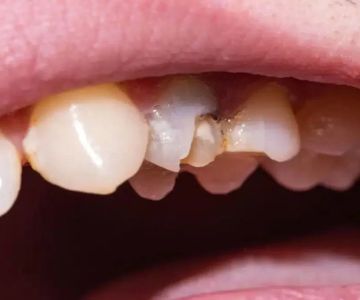
- Causes-of-Tooth-Sensitivity-to-Heat-and-Cold
- How-Heat-and-Cold-Affect-Sensitive-Teeth
- Common-Conditions-Leading-to-Tooth-Sensitivity
- Real-Life-Examples-of-Tooth-Sensitivity
- Effective-Management-and-Prevention-Tips
- Professional-Care-Options-at-Dentistry-Toothtruth
1. Causes of Tooth Sensitivity to Heat and Cold
Tooth sensitivity to heat and cold is a common dental complaint that can significantly affect daily life. Understanding the root causes helps in managing the discomfort effectively. At its core, tooth sensitivity arises when the dentin layer beneath the enamel becomes exposed. This layer contains microscopic tubules that lead directly to the nerve endings inside the tooth. When exposed to temperature extremes, these tubules transmit sensations that the nerve interprets as sharp pain or discomfort.
Several factors contribute to this exposure. Enamel erosion caused by acidic foods, aggressive brushing, or dental abrasion can thin the protective layer, making the teeth vulnerable. Gum recession is another major culprit, as it exposes the tooth roots, which lack enamel protection. Furthermore, tooth decay, fractured teeth, and even dental procedures like whitening can increase sensitivity to heat and cold.
1.1 Enamel Erosion and Its Impact
Enamel is the hardest substance in the human body, but it is not invincible. Acidic diets or acid reflux can gradually wear down enamel. Once the dentin is exposed, hot or cold stimuli cause discomfort. Imagine drinking an ice-cold beverage and suddenly feeling a sharp jolt in your teeth; this is a classic sign of enamel loss. Over time, this can worsen if not addressed promptly.
1.2 Gum Recession and Root Exposure
Gum recession can happen due to periodontal disease, aggressive brushing, or natural aging. When gums recede, the softer root surface becomes exposed, which lacks enamel and is highly sensitive. This exposure means that everyday activities like drinking hot tea or eating ice cream can trigger pain, disrupting normal eating habits and enjoyment.
2. How Heat and Cold Affect Sensitive Teeth
The human body is wired to react strongly to temperature changes, especially in sensitive tissues. In teeth, the exposed dentin tubules act like tiny channels that allow heat and cold to reach nerve endings quickly. This immediate transmission causes the characteristic sharp or shooting pain.
Cold sensitivity often manifests during the consumption of cold drinks, ice cream, or even breathing cold air. Heat sensitivity can be triggered by hot beverages or foods, sometimes causing prolonged discomfort after exposure. This dual sensitivity can complicate daily eating and drinking choices, leading to frustration.
2.1 Why Sensitivity Can Vary
Sensitivity levels can fluctuate depending on the extent of dentin exposure and the underlying cause. For example, after dental treatments such as fillings or whitening, temporary heightened sensitivity is common. For others, chronic gum disease or enamel wear causes more persistent pain. Understanding this variability helps patients tailor their approach to managing sensitivity.
3. Common Conditions Leading to Tooth Sensitivity
Beyond enamel erosion and gum recession, several other dental conditions can trigger heat and cold sensitivity. Cavities, cracked teeth, worn fillings, and exposed dental roots are often overlooked causes.
3.1 Tooth Decay and Cavities
When cavities develop, they erode the tooth structure, exposing deeper layers and nerve endings. This exposure can cause acute sensitivity to hot and cold, and often signals a need for immediate dental care to prevent further damage.
3.2 Cracked or Fractured Teeth
A cracked tooth can expose the dentin or even pulp, causing severe pain with temperature changes. This damage may come from trauma, grinding teeth, or biting on hard objects. Ignoring a crack can lead to infections or more extensive treatment down the road.
4. Real-Life Examples of Tooth Sensitivity
Consider Jane, a 35-year-old who loved her morning iced coffee until she started experiencing sudden, sharp pains every time she took a sip. After some research and a visit to her dentist, she discovered her sensitivity was due to enamel erosion caused by frequent acidic drinks. By switching her habits and using recommended toothpaste, Jane saw significant improvement.
Similarly, Mark, a 50-year-old with a history of gum disease, noticed that cold air and hot drinks triggered persistent discomfort. His dentist explained that gum recession had exposed his roots, and through targeted treatments and improved oral hygiene, his sensitivity was managed effectively.
5. Effective Management and Prevention Tips
Managing tooth sensitivity involves a combination of lifestyle changes, dental care products, and sometimes professional treatments.
5.1 Daily Oral Care Adjustments
Switching to a soft-bristled toothbrush and using toothpaste specifically formulated for sensitive teeth can protect enamel and reduce pain. Avoiding acidic foods and drinks or rinsing the mouth with water after consumption helps minimize enamel erosion.
5.2 Professional Treatments
For persistent or severe sensitivity, dentists can apply fluoride varnishes or dental sealants to protect exposed dentin. In some cases, bonding or restorative procedures may be necessary to cover sensitive areas.
6. Professional Care Options at Dentistry Toothtruth
If you’re struggling with tooth sensitivity to heat and cold, Dentistry Toothtruth offers comprehensive diagnostic services and personalized treatment plans tailored to your needs. From preventive care products to advanced restorative treatments, Dentistry Toothtruth is dedicated to helping patients regain comfort and confidence in their smiles.
Visit Dentistry Toothtruth to explore the most suitable products, services, and expert advice designed to address tooth sensitivity effectively. Their team understands the complexity behind dental pain and provides solutions that go beyond temporary relief, focusing on long-term oral health.







 Westgate Dental Arts
Westgate Dental Arts Coventry Family Dental
Coventry Family Dental Familia Dental
Familia Dental Dr. Daniel S. Fife, DDS
Dr. Daniel S. Fife, DDS Dentistry At Suburban Square: Michael I. Wollock, DMD
Dentistry At Suburban Square: Michael I. Wollock, DMD Comfort Care Dental
Comfort Care Dental The Importance of Oral Health Education During Pregnancy for a Healthy Pregnancy
The Importance of Oral Health Education During Pregnancy for a Healthy Pregnancy Why Skipping Dental Checkups Can Lead to Bigger Oral Health Problems
Why Skipping Dental Checkups Can Lead to Bigger Oral Health Problems Best Tips for Brushing Your Teeth Properly for Healthy Gums: Essential Techniques for Oral Health
Best Tips for Brushing Your Teeth Properly for Healthy Gums: Essential Techniques for Oral Health Advantages of Porcelain Dental Restorations
Advantages of Porcelain Dental Restorations How Can Diabetes Cause Tooth and Gum Problems? Preventing and Managing Oral Health Issues
How Can Diabetes Cause Tooth and Gum Problems? Preventing and Managing Oral Health Issues Healthy Habits for Promoting Good Oral Health and Hygiene: Tips for a Healthy Smile
Healthy Habits for Promoting Good Oral Health and Hygiene: Tips for a Healthy Smile